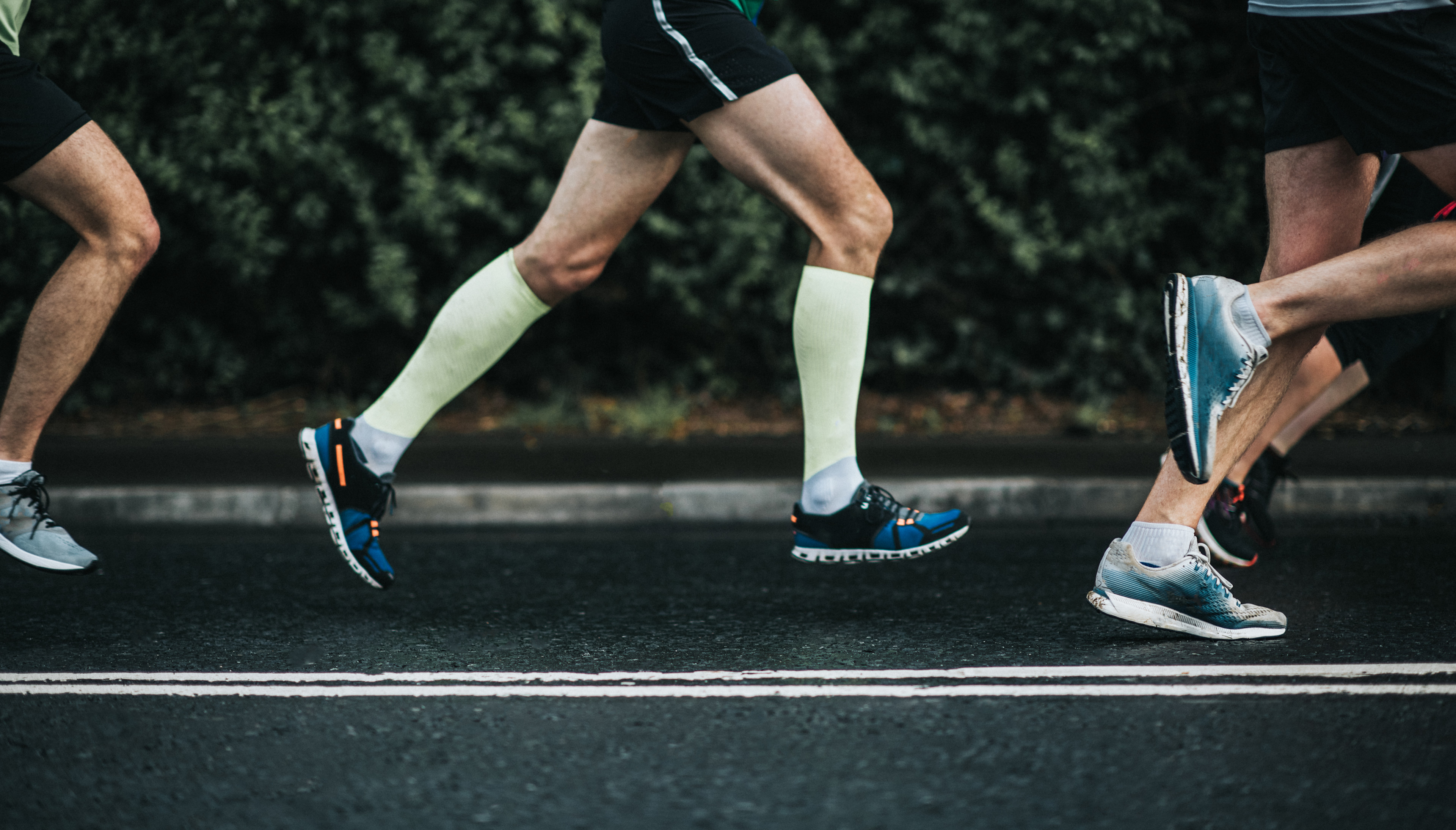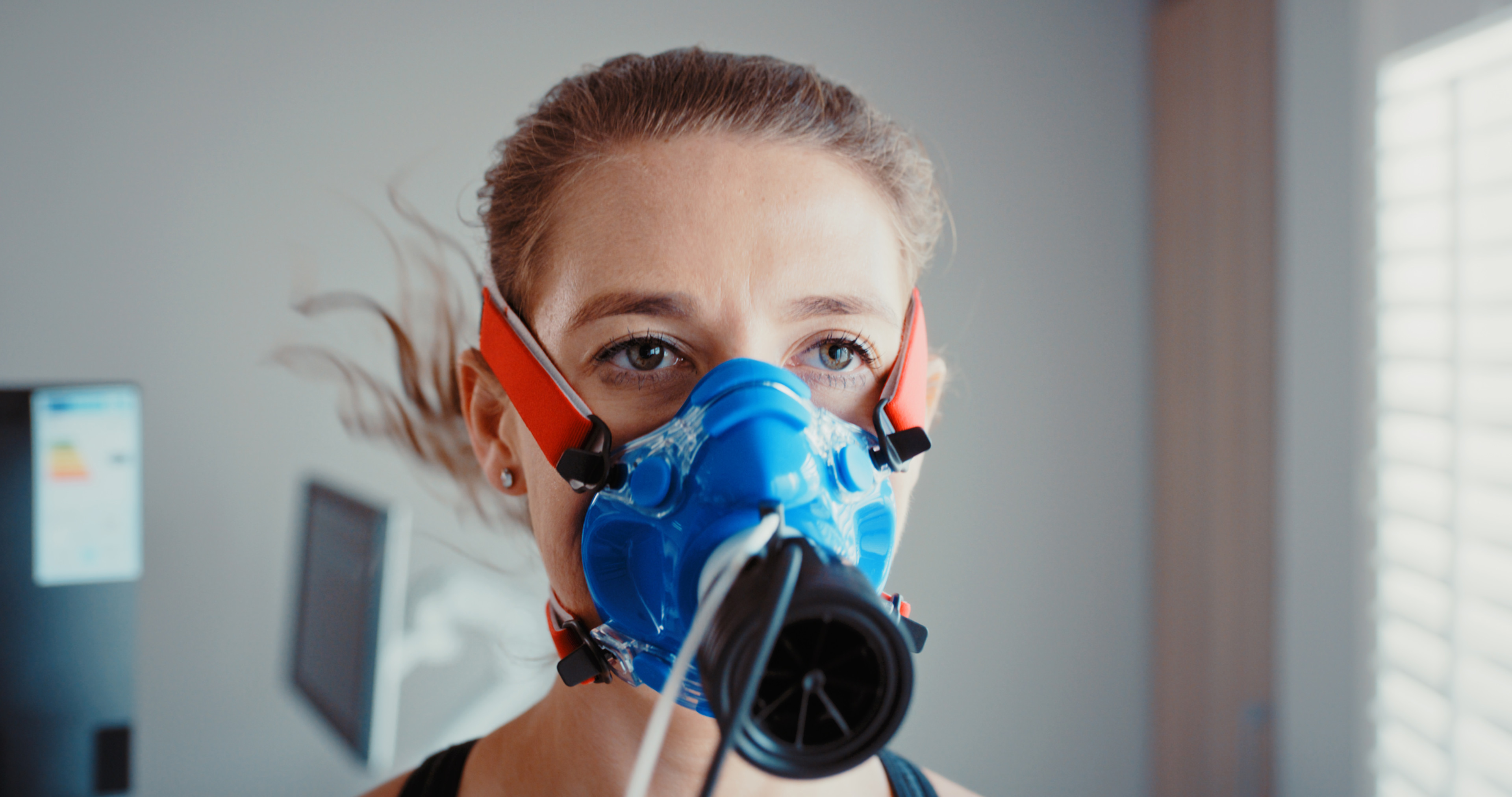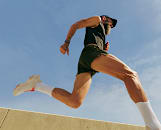
Catherine Falls Commercial via Getty Images
Running Economy Is a Key Indicator of Performance—Here’s How to Improve It
A leading running-economy researcher breaks down this important metric, including why it's key to longer and faster runs.
By Jennifer Heimlich•
What Is Running Economy, Exactly?
The Importance of Running Economy
Which Factors Influence Running Economy?
How to Measure Running Economy
How to Improve Your Running Economy
How to Use Running Economy to Improve Your Running
The Takeaway
Any serious runner who is determined to get faster has likely heard about running economy. Maybe someone in your run club likes to throw around the term, or you’ve come across tips for it on TikTok. But what is running economy, exactly, and why does it matter? And, more importantly, how can you harness it to secure a new PR?
Discover more ways to reach your goals with Peloton
We’ve got you. With the help of Kyle Barnes, PhD, an associate professor of exercise science at Grand Valley State University and a running economy researcher, we’re breaking down this key performance indicator for runners. Here’s what you need to know to maximize your own running economy.
What Is Running Economy, Exactly?
The technical definition of running economy is the amount of oxygen (i.e., energy) your body uses to run at a given pace. What does that actually mean in practice? Barnes puts it into layman’s terms this way: “It’s how efficiently the body can run at a specific speed,” he says. “A good analogy is if you think about the fuel efficiency of a car—how many miles per gallon a car gets. Running economy is very similar in that we’re looking at how much oxygen we require to run at a specific speed.” Just like a car that guzzles less gas will have better fuel efficiency, the less oxygen you need to run, the better your running economy.

Peloton App
Access thousands of classes with no equipment needed.
The Importance of Running Economy
Here’s why running economy matters: If you’re consuming less oxygen at your race pace during a long-distance run, you’re going to be able to run longer or faster without it feeling quite so hard. “If you take two runners and have them run at the exact same speed, but it takes Runner A 50 milliliters of oxygen to run at that speed, and it takes Runner B 45 milliliters, then Runner B can do the same work with less fuel,” Barnes says. That means Runner B can either hold that pace for longer without having to slow down, or they can bump up their speed so they’re also using the same amount of fuel as Runner A—50 milliliters of oxygen—but going even faster.
Running economy matters in distances as short as one mile, Barnes says. But the longer you run, the more important it becomes. “If people are using less oxygen, they’re able to run the first, say, 20 miles of a marathon much more efficiently,” Barnes says. Then, once they get toward the end of that marathon, they still have enough oomph to maintain that pace or even kick into a higher gear to potentially beat the runners around them who’ve been running less economically.
Which Factors Influence Running Economy?
A wide range of factors can impact your running economy. Although the concept may seem simple, the measurement actually reflects how well your metabolic, cardiovascular, pulmonary, biomechanical, and neuromuscular systems function in combination. This means that factors such as neuromuscular coordination, biomechanics (including running form and stride), muscle fiber type, and metabolic adaptations within the muscles all impact running economy.
For better or worse, a number of these things simply come down to genetics, including your ratio of slow-twitch to fast-twitch muscle fibers or how long your legs are. When elite runners finish a marathon in nearly two hours, Barnes says, it’s a clear sign that “they were born with the right physiological adaptations to be able to deliver oxygen efficiently.”
That said, there’s still a lot you can do to modify your running economy through proper training. This includes improving the strength and power of your lower leg muscles, boosting your mitochondria (which convert oxygen to energy), decreasing your breathing rate, and running with more efficient biomechanics, such as a higher cadence and less vertical bounce.
Although you might assume that improving your VO2 max (a major indicator of aerobic fitness) would give you better running economy, research has shown that these two factors are mostly independent of each other. One 2021 study on elite marathon runners, for example, found that some athletes had surprisingly low VO2 max values, but they could compensate by having better running economy.

Kobus Louw via Getty Images
How to Measure Running Economy
The only way to accurately measure your running economy is to undergo an oxygen consumption test in a lab. The test involves running at progressively faster speeds on a treadmill while wearing a mask connected to a machine that measures your oxygen consumption. Unfortunately, that’s not exactly an easy—or inexpensive—thing to do.
“I would say most runners don’t need to have their running economy measured,” Barnes says. But if you’re a serious athlete who loves quantitatively analyzing the effects of your training, getting your running economy measured is a sure way to tell whether all the work you’re doing is having the intended effect.
However, if you just want to get a general idea of whether your running economy is improving or not, Barnes recommends keeping an eye on your heart rate at various paces. “Heart rate is by no means identical to your oxygen consumption, but it is related to your ability to deliver oxygen,” he says. “And for the novice runner, if your heart rate is going down at specific speeds, then you’re becoming more efficient in your ability to deliver oxygen to the body.” For instance, if your heart rate used to hit an average of 150 beats per minute when running a 9-minute mile, and now it’s 140 at the same pace, odds are that your running economy has improved.
How to Improve Your Running Economy
For the most part, you can’t quickly change your running economy, Barnes says. “We’re talking about physiological adaptations that take weeks and months, even years to really develop,” he says. But consistency (and patience) can lead to progress. Here’s what to focus on to make those adaptations happen.
Increase Your Mileage
A big part of the running economy equation is simply how much you run. As Barnes has pointed out in his research, a high training volume and years of running experience are associated with improved running economy. This is perhaps because, with practice, you naturally fall into your most economical gait pattern. More training also increases the number of mitochondria in your cells, which help to convert oxygen into energy. “If you just do more of it, you’re probably going to become more efficient as a runner,” Barnes says.
Commit to Interval Training
Another smart strategy is to add interval work to your training plan. Doing more running at specific speeds—like at marathon pace, half marathon pace, or 5K pace—helps you become more economical at those paces, Barnes says.
Additionally, hitting your top speeds with sprint workouts and hill repeats can also teach your body to move over the ground more efficiently, he adds. (One 2013 study Barnes led on uphill running found that any high-intensity intervals can help improve running economy regardless of how long the intervals were.) That’s because, when sprinting, you’re teaching your body to recruit more muscle fibers—something it resists doing unless you force it to, Barnes explains.
Do Heavy Resistance Training at Least Twice a Week
There’s a good reason why many pro runners follow a running-specific strength training regimen. A 2016 meta-analysis published in the Journal of Strength and Conditioning Research and a 2017 meta-analysis published in Sports Medicine both showed that performing two to three strength training sessions per week could have a beneficial effect on running economy, with improvements up to eight percent. Lifting has a similar effect as sprinting: When you’re moving heavy loads during exercises like deadlifts or squats, you’re forcing your body to recruit more muscle fibers and more motor units to handle that task. This leads to increased strength in your muscles, which in turn powers your running.
Add Plyometrics
While heavy weight training can build stronger muscles, explosive plyometric exercises like tuck jumps and bounding skips can amp up your ability to quickly generate a lot of power. A 2024 meta-analysis published in Sports Medicine found that plyometric training can improve running economy, even at slower speeds. However, researchers concluded that a combination of both heavy strength training and plyometrics likely gives you the biggest bang for your buck.
Clean Up Your Form
The biomechanics of your running form can affect how efficiently you run. For instance, overstriding (where your foot lands too far in front of your hips) can have a braking effect, while increasing your cadence can decrease how much energy it takes to cover the same distance.
However, Barnes explains that because all of our bodies are different, there’s no one most efficient version of running form. “When you watch some people, you might think, ‘Oh, they have terrible form,’ but they could actually be very efficient in terms of their ability to deliver oxygen,” Barnes says.
Upgrade Your Shoes
There's one trick that can immediately boost your running economy: wearing carbon plate “super shoes.” Barnes was the first independent researcher to study the original carbon-plated shoes, the Nike Vaporfly 4%, which the brand said could improve a runner’s economy by four percent. Barnes’s findings? Runners were 4.2 percent more efficient wearing carbon fiber shoes, he says.
Now, nearly every running shoe brand sells at least one carbon fiber racing shoe. To this day, Barnes says lacing one up is the quickest way to boost your running economy without having to put in any extra effort. He explains this is likely because the plate helps to encourage more efficient running mechanics while the lightweight, springy foam stores and releases more energy than a typical shoe, pushing you forward with every stride.
How to Use Running Economy to Improve Your Running
There are three major factors that can improve your ability to run fast over long distances: your lactate threshold (the intensity level where your body produces lactate faster than it can clear it), your VO2 max (the maximum amount of oxygen your body can use during exercise), and your running economy. “Of the big three, running economy is the most important for long distances—and is the most trainable,” Barnes says. Although you can certainly improve both your VO2 max and lactate threshold through training, running economy responds positively to a number of interventions because so many different factors go into it.
The caveat is just that you need to be prepared for diminishing returns. “Once you get to the higher levels, it becomes more and more difficult to improve that efficiency,” Barnes says. But the opposite is also true: The more room you have to improve, the more you have to gain from putting in the effort to boost your running economy.
The Takeaway
Running economy has a major effect on how fast you can run over long distances without petering out. And because so many variables impact it, there are many different ways you can go about improving it, from increasing your mileage to doing more speed work, adding in resistance training and plyometrics, or simply splurging on a pair of fancy shoes. Sure, genetics play a big role, but by putting in strategic training, you’ll be putting stock in your own running economy—and you’re likely to see (and feel) the payoff.
Related Articles

Run
Running Cadence Is an Overlooked Metric. Here’s Why It Matters

Run
Peloton’s Ultimate Guide to Running Faster and Meeting Your Speed Goals

Run
Running Can Feel Really, Really Challenging. These 12 Benefits Prove It’s Totally Worth It

Run
If You Want to Speed Up Your Runs, It’s Time to Analyze Your Gait
This content is for informational and educational purposes only and does not constitute individualized advice. It is not intended to replace professional medical evaluation, diagnosis, or treatment. Seek the advice of your physician for questions you may have regarding your health or a medical condition. If you are having a medical emergency, call your physician or 911 immediately.
Take your runs to the next level
Lace up and enter your email to get articles, instructor tips, and updates from Peloton sent to your inbox.
By providing your email address, you agree to receive marketing communications from Peloton.
For more about how we use your information, see our Privacy Policy.








